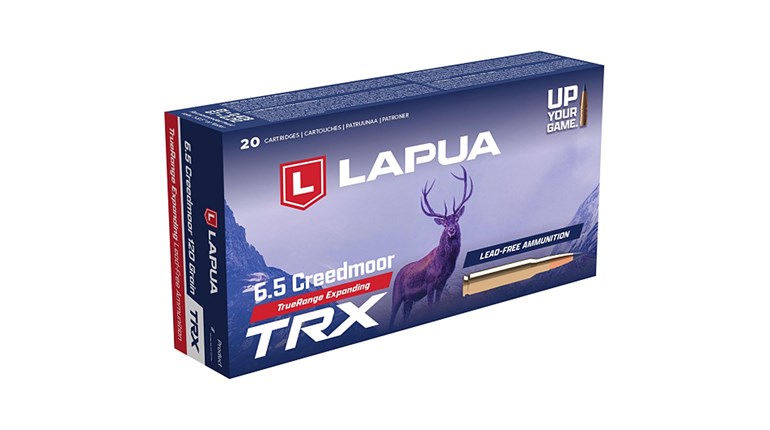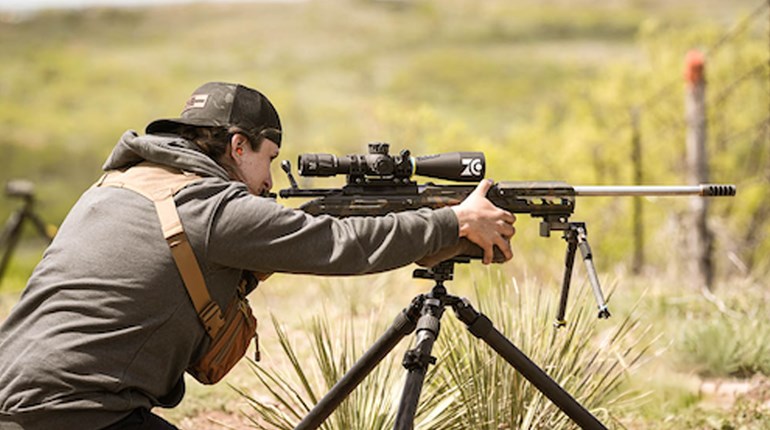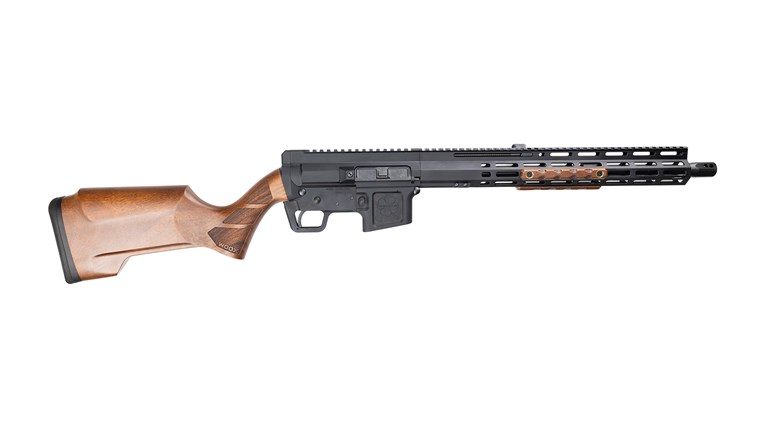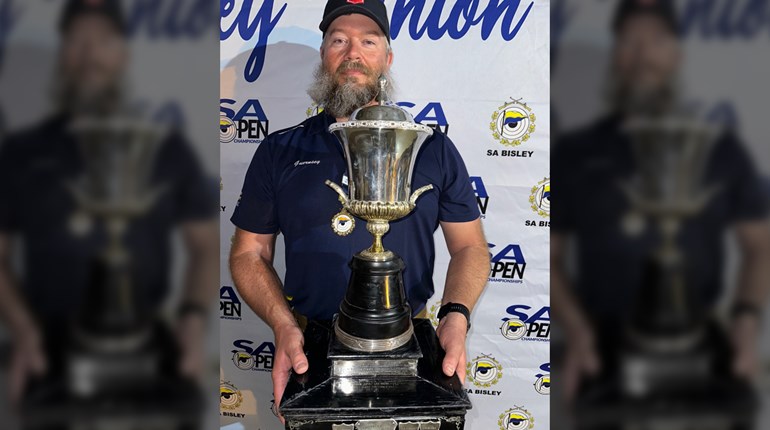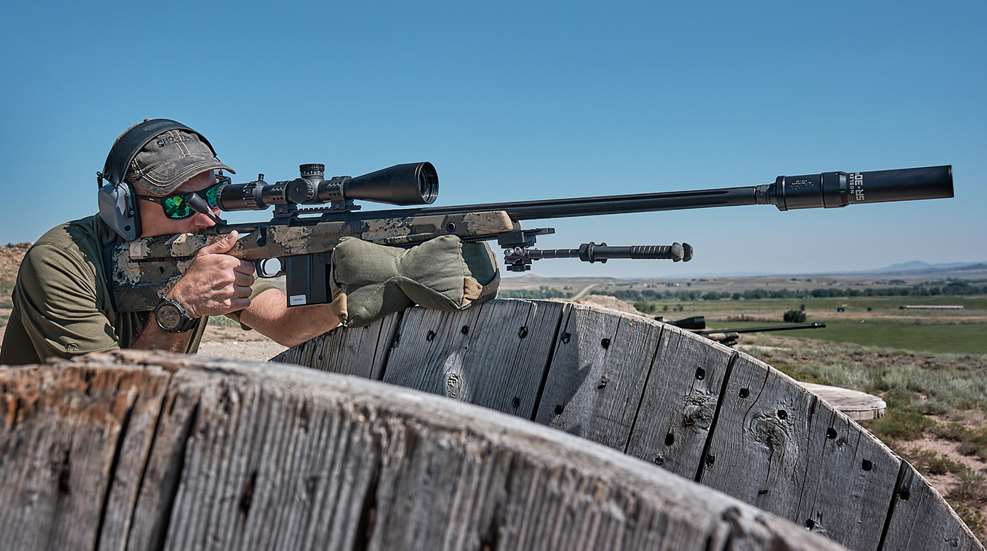
I’ve always loved shooting long range. Perhaps it‘s because I spent so much time in my early shooting career with handguns, I want to catch up on all the rifle shooting I’ve missed. Growing up in New England doesn’t help, either—there’s not a lot of places you can shoot out to 600 yards, let alone 1,000 or a mile. When I get a chance to shoot beyond 200 to 300 yards, I eagerly accept.
So, when the good folks at Bushnell extended an invitation to head out to Wyoming to shoot at some really long ranges testing a new scope (can’t say what it is, yet, but stay tuned to shootingillustrated.com for more information later this year), I didn’t hesitate in the least. Once out on the range, I was especially glad I’d made the trip—this wasn’t kinda, sorta long range, like 600 yards. This was seriously long: We had berms at 1,000 and 1,350 yards.
Oh, and at one mile, too.
A mile? As the expression goes, you had my interest. Now you have my attention.
Reach Out (Way Out) And Touch Something
There are a lot of factors that go into long range shooting: Not just a great rifle, but all the components, too—quality barrel, smooth trigger, adjustments for rests; that’s only a part of the conversation. There’s the glass—since this was a Bushnell excursion, we had rifles with Elite Tactical DMR3 3.5-21X and XRS3 6-36x scopes mounted in addition to the new scope I can’t talk about yet. Spotting scopes and spotters who can read wind, see trace and make snap judgement calls on where a shot went and how to correct are also critical. Of course, the shooter has to do their part as well: controlled breathing, smooth trigger press, follow through and reacting instantly to any correction the spotter calls are necessary components.
And the math. Oh, the math.
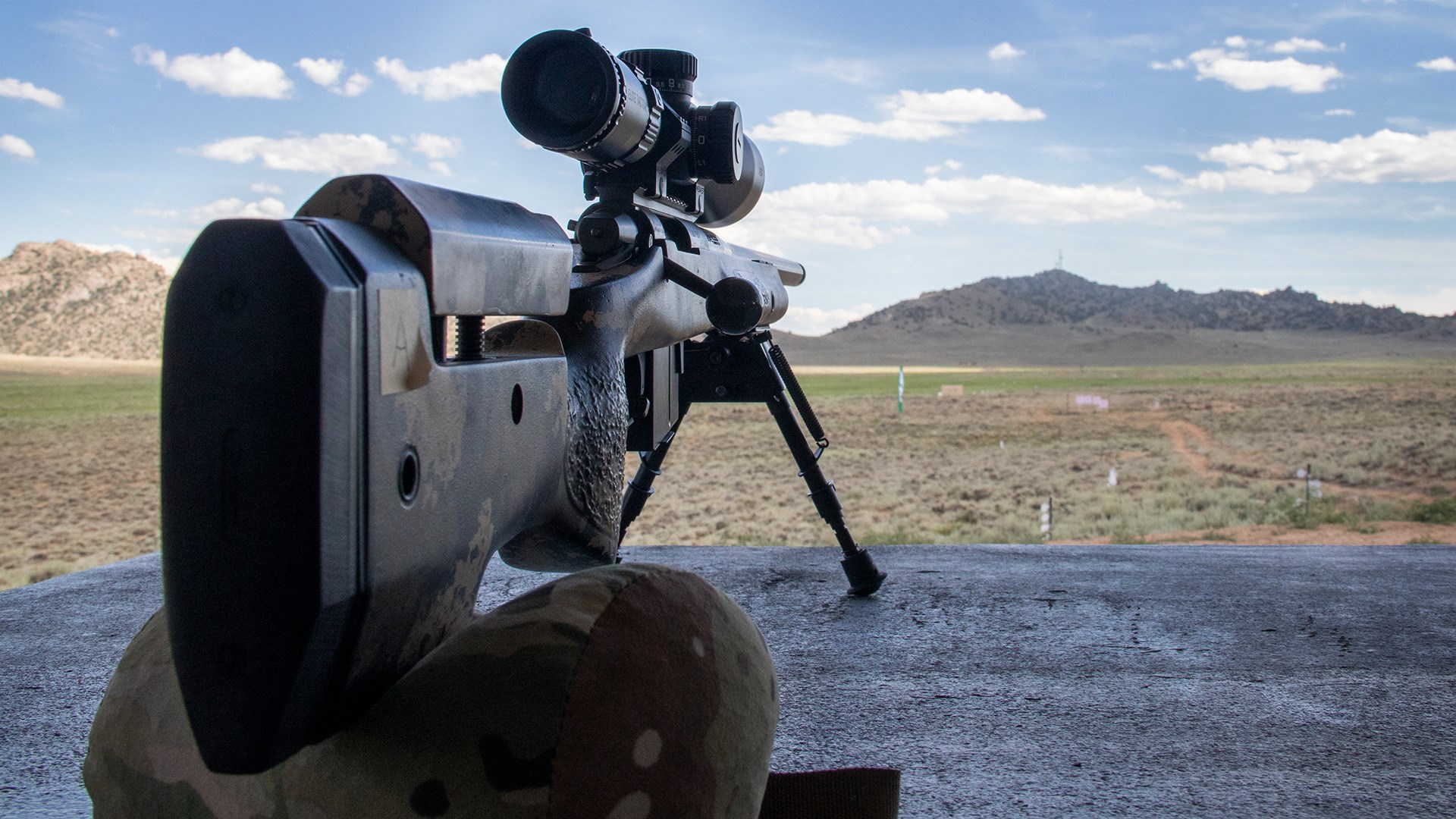
Sure, when you’re shooting at a target at known distance, it’s pretty easy. The more experienced will have a known zero (100 or 200 yards as a general rule) and data on where to dial elevation and windage based on target distance and wind calls. For the purposes of this exercise, the professional Bushnell shooters helping us out had gone through this, so the hardest of the hard work was done for us. The rifles—GA Precision rigs built on Remington 700 receivers and mated to Bartlein barrels—had been zeroed at 100 yards and adjustments noted for the many targets on the range.
And we had plenty of targets: plates were arranged at every 100 yards from 100 to 1,000 yards out, with separate berms at 1,350 yards and 1 mile. On a separate course, plates of varying sizes were arrayed for what we were told would be a friendly competition—here’s a tip, though: among long-range shooters, the competition may be friendly but it is fierce. On the first day, we got our long-range bearings, working on the known-distance targets from the bench.
Stretching Your Long Range Shooting Legs
Shooting at 100 and 200 yards with a precision bolt-action rifle in 6.5 Creedmoor off a solid bench is not much of a challenge. You have to pretty much try to miss. Wind starts to be a thing at 400 yards, and really doesn’t factor terribly much until 600 and farther. It wasn’t until the 1,000-yard berm that most of us needed more than one or two shots to make solid hits. Repeatedly hitting a 24-inch steel gong at 1,000 yards is pretty awesome, I’m not gonna lie. Stretching out to 1,350 yards added to the complexity, as the wind really starts coming into play, and even moreso at a mile.
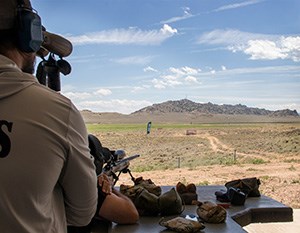 Interesting note, too: 6.5 Creedmoor doesn’t make much of an impact at 1 mile. It won’t move the 36-inch gong at all, and even with suppressors, there’s no audible ding on a hit. Here, you need eagle-eyed spotters to look for spall—fragments of bullet jackets hitting the ground in a uniform manner after making a hit—to verify that you’d connected with the target. In my case, a miss right off the edge got the spotter looking in the right area to see the impact on the shot that connected—and the second shot to prove it wasn’t just a fluke…
Interesting note, too: 6.5 Creedmoor doesn’t make much of an impact at 1 mile. It won’t move the 36-inch gong at all, and even with suppressors, there’s no audible ding on a hit. Here, you need eagle-eyed spotters to look for spall—fragments of bullet jackets hitting the ground in a uniform manner after making a hit—to verify that you’d connected with the target. In my case, a miss right off the edge got the spotter looking in the right area to see the impact on the shot that connected—and the second shot to prove it wasn’t just a fluke…
It was the “friendly” competition, though, that really proved a test of our long-range abilities. The attending writers were split into two teams and set against each other. While the distances were shorter—400 to 700 yards—we used improvised rests and field-expedient positions. Shooting off a set of oversize tires, or off a giant cable spool or even the back of an ATV were all on the menu as we found our targets somewhere in the hills of the Wyoming countryside. For the first two rounds, we were given the choice of dialing our different target distances or using holdovers—the former is more precise, the latter is faster—but the last round was a strict “no touch” event: we were not permitted to touch the scope at all for any of the six targets.
How tough was it? We had two professional PRS shooters helping (one per team), and of the two, one made two out of six hits on target, the other made four (I’m going to pat myself on the back here for my three hits…) It definitely gives you appreciation for how difficult PRS competition is when you have to hit a 6-inch plate at 650 yards shooting with the rifle balanced on a truck tire…
It drives home just how critical it is to know your equipment inside and out, how to perform under pressure and how to apply the fundamentals regardless of application. Which, when you think about it, is true whether you’re competing (friendly!) against fellow gunwriters, looking for targets of opportunity on a varmint hunt or taking a specialized training class to better your defensive skills.












